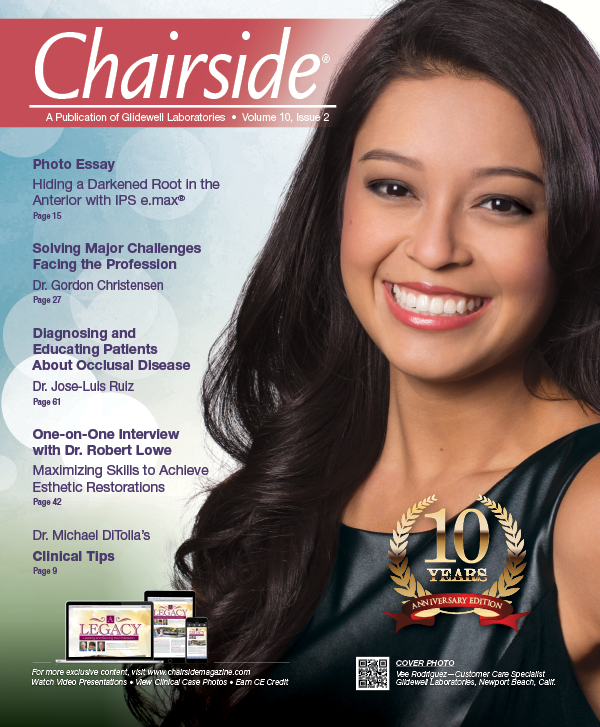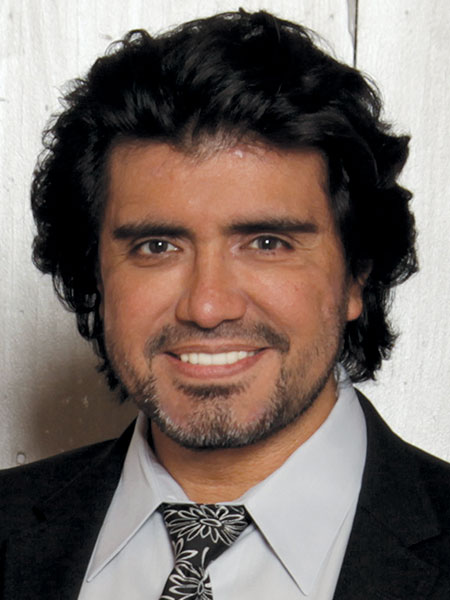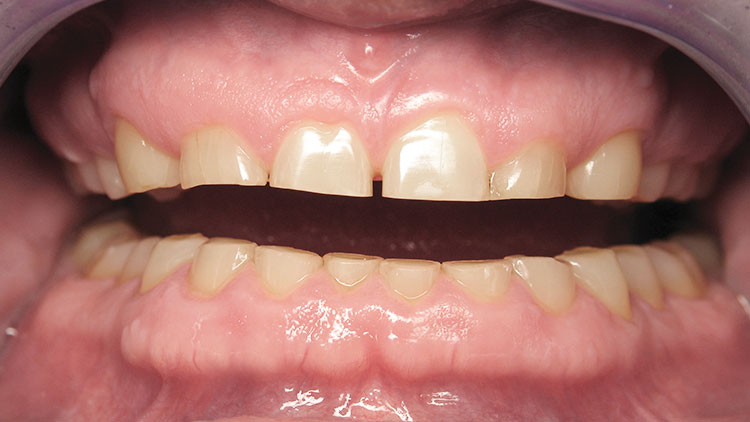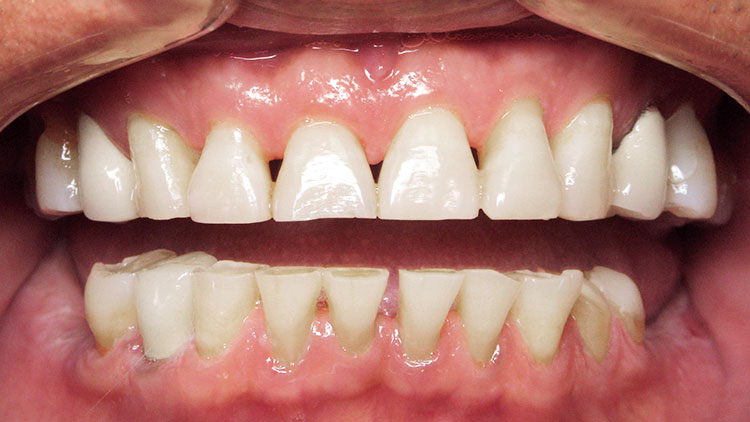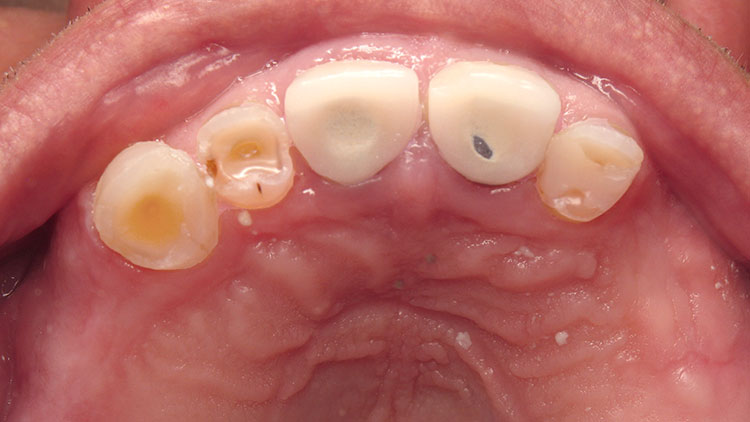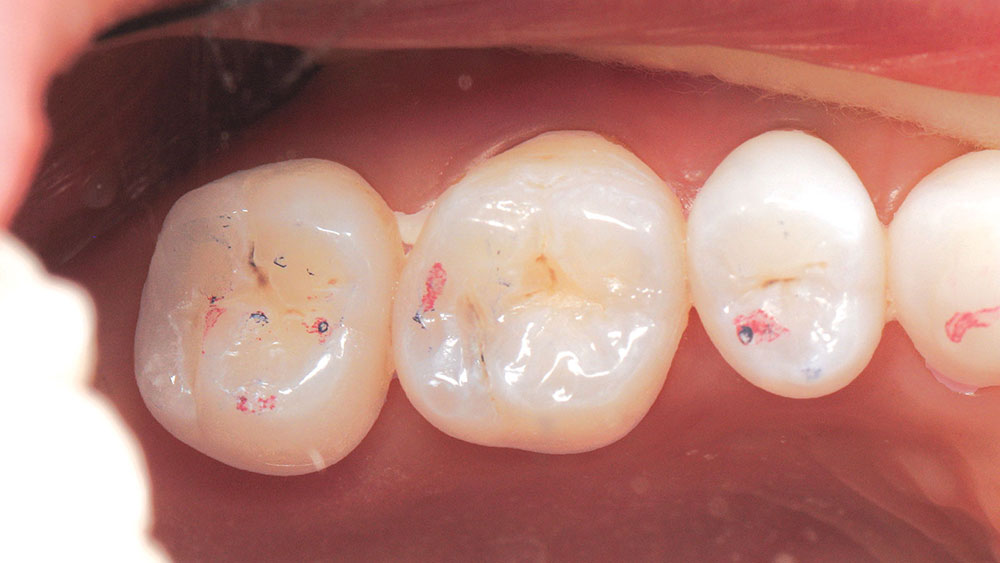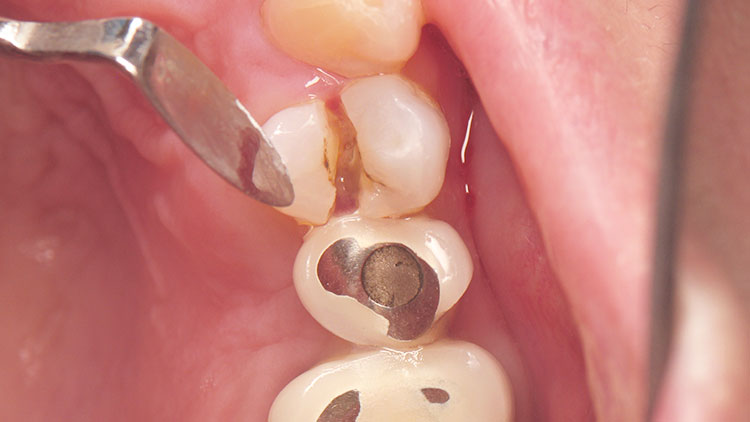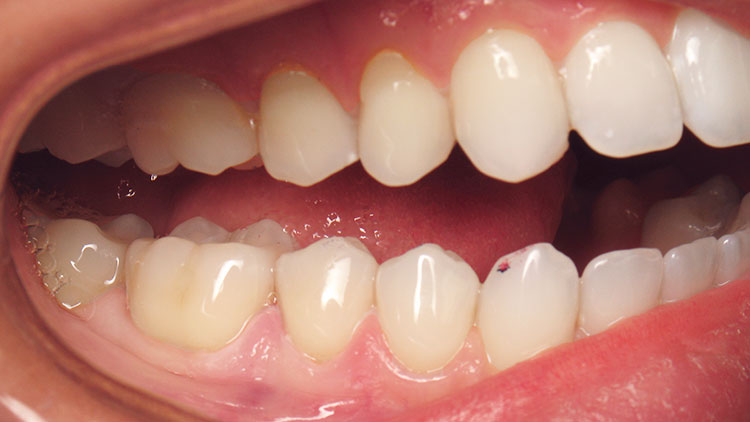Diagnosing & Educating Patients About Occlusal Disease: A new standard of care for recognizing this highly destructive, little-understood problem
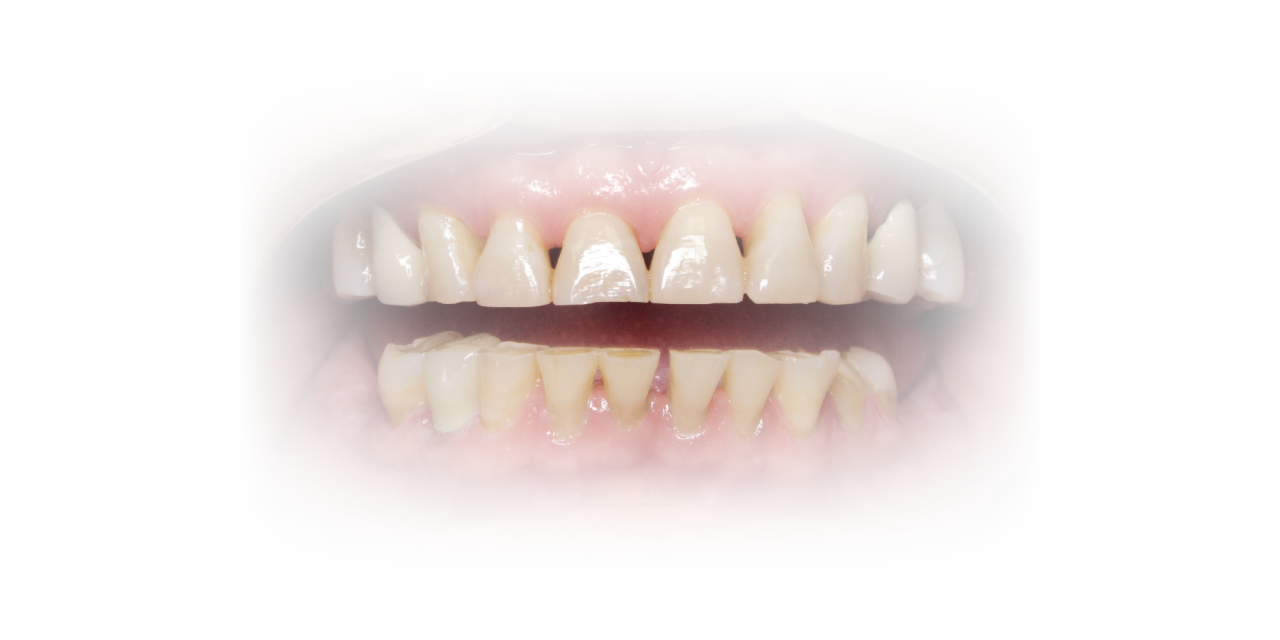
Many patients are surprised to learn that occlusal disease (OD) can be among the most destructive enemies of human dentition, because its silent and insidious damage often goes unrecognized. In addition, patients may think that tooth wear is a normal process.
Unfortunately, even dentists may be surprised to hear how destructive OD can be. On a daily basis, they treat and repair the damage caused by OD, but may be unaware of the disease’s etiology. Although they frequently see patients with cervical tooth sensitivity and offer treatment for it, for example, many clinicians do not recognize that it may be caused by OD. Similarly, OD may not be considered but is often implicated in cases of broken or fractured fillings (or other types of restorations), cracked tooth syndrome, Class V fillings, or even mobile teeth. In some instances, patients referred to endodontists for root canal therapy on painful teeth need only occlusal adjustment or therapy.
Few dentists routinely include an occlusal evaluation for all patients, and even fewer are confident of their ability to perform occlusal therapy. The author believes that occlusal assessment should be a new standard of care for all patients. In this article, he describes a simple technique for OD diagnosis to begin the process of dealing with this disease.
Recognizing OD
OD is a chronic destructive process that can affect every part of the masticatory apparatus (e.g., joint, muscles, periodontium or teeth) as a consequence of occlusal disharmony and parafunction. It has specific signs and symptoms, and like other chronic diseases, it can only be managed and not cured. In many patients, this tremendously underestimated disease is more destructive than both caries and periodontal disease combined, yet the vast majority of dentists do not include routine screening for OD. This may be due to the lack of a simple and logical implementation protocol, or is perhaps a result of skepticism about the magnitude of its destructive impact on the dentition. Dentists regularly see patients with signs and symptoms of OD that have mutilated their teeth to the point of requiring expensive restorations or extensive rehabilitation (Figs. 1, 2). In some cases, the signs and symptoms of OD are chronic in nature, whereas other times they are acute and debilitating. OD patients may experience tooth sensitivity that leads them to avoid cold food and beverages or use warm water to brush their teeth. Patients needing to repair fractured teeth every year or so may incur extensive long-term costs as well as tooth loss, which can cause them to slowly become dental cripples (Fig. 3). Some patients wake up in pain or with tired facial muscles. Yet despite the human cost of this condition, there are still some who question whether it fits the definition of a disease.
OD is a chronic destructive process that can affect every part of the masticatory apparatus … as a consequence of occlusal disharmony and parafunction.
Defining the Term
The American Heritage Dictionary’s definition of “disease” is an “abnormal condition of an organism as a consequence of infection, inherent weakness or environmental stress that impairs normal physiological function.”1 Teeth have multiple functions — masticatory, phonetic and esthetic — and OD impairs normal function of each of the dentition’s functions. Masticatory function is impaired by making eating difficult due to muscle pain, painful tooth fractures and missing teeth, leading to impaired chewing and tooth sensitivity. Phonetic function is impaired when fractures, extreme mobility and bone loss lead to missing teeth. Finally, social/esthetic function is impaired due to disfiguring tooth wear and tooth loss caused by fractured teeth.
Just because people with OD continue to eat — as do those with periodontal disease, whose ravages are undisputed — does not mean they have normal function. Severe hypersensitivity may make brushing or eating normal food painful. Millions of dollars are spent treating hypersensitivity with ineffective techniques, when the literature points to the fact that tooth sensitivities can be controlled with appropriate occlusal treatment.2 Sometimes a tooth may develop pain so severe that it seems to require an endodontic procedure (Fig. 4), when in fact the etiology is occlusal trauma.
Clinical experience and literature suggest a link between Class V restorations and occlusal trauma.3,4,5,6 Many of these restorations are performed every year to treat cervical abfractions, usually without properly diagnosing or treating the primary cause of this problem, which is often OD. In these cases, failure to recognize the etiology of the complaint may deprive the patient of appropriate treatment — for example, performing a filling when occlusal adjustment would be the correct treatment. Even when a Class V filling is performed, not accepting the occlusal etiology makes treatment less successful. Class V restorations often fail when clinicians miss the occlusal link and attribute the failure to poor bonding while the real problem is the occlusal trauma; removing occlusal interference would be the key to success and durability.
OD is not an infection, but it is a form of mechanically induced damage, similar to the repetitive stress that causes carpal tunnel conditions. Pathological occlusion combined with parafunction leads to damage, which in turn impairs normal function. Therefore, it seems appropriate to label OD as a disease rather than call it a condition or tooth wear or ascribe it to aging. By not calling it a disease, the profession continues to underestimate the damage caused to our patients. The term “occlusal disease” brings the appropriate urgency to the problem, helping patients understand that it is not aging or natural wear, but a serious disease that requires treatment.
OD is not an infection, but it is a form of mechanically induced damage, similar to the repetitive stress that causes carpal tunnel conditions.
The majority of restorative failures and postoperative sensitivity problems are caused by OD, yet very few dentists diagnose OD during a comprehensive evaluation.7,8 The lack of education for dentists and patients regarding OD has led to significant underdiagnosis in everyday practice.9 Considering how vitally important OD diagnosis and management are to the long-term health of patients’ dentition and the longevity of dentists’ restorative work, it makes sense to evaluate patients for OD and educate them during every comprehensive examination.
The majority of restorative failures and postoperative sensitivity problems are caused by OD, yet very few dentists diagnose OD during a comprehensive evaluation.
The OD Management System
The author developed the “Occlusal Disease Management System” to methodically implement diagnosis and treatment of OD in incremental stages based on severity and patients’ willingness to accept responsibility and treat their occlusal/temporomandibular disorder pathology. The simple system allows even a busy dentist to be able to implement occlusal diagnosis and therapy on all patients.10
The system’s first stage includes a basic occlusal and temporomandibular joint (TMJ) screening performed during every comprehensive examination to screen for signs and/or symptoms of OD. The beauty of this system is that it will add no more than three to five minutes to the normal protocol for comprehensive exams. The patient would fill out a brief dental history to allow for self-disclosure of conditions that may be related to OD, such as jaw pain, headaches or migraines, tooth sensitivity, and grinding or clenching. Using this information, the dentist can easily add an assessment of OD to his or her comprehensive examination of every patient.
Assessing the Signs and Symptoms
The next stage, identifying and diagnosing OD, is far simpler than most clinicians assume. Dentists must only recognize the presence or absence of seven signs and symptoms. Patients who present with one or more of these signs or symptoms can be presumed to have OD. On the other hand, patients with none of these signs and symptoms can be presumed to be well adapted to their occlusion and not in need of occlusal therapy. The seven signs and symptoms of OD are detailed below:
- Pathological occlusal wear and fractures of teeth/restorations. An experienced clinician can spot pathological tooth wear almost immediately. Occlusal wear is multifactorial, a combination of attrition, erosion and abrasion.6,11 Clinicians who observe excessive occlusal wear should always suspect OD. Likewise, multiple chips on teeth, small and large fractures of teeth and restorations, and a history of breaking teeth or restorations can all signal a pathological occlusion (Fig. 5).
- Cervical dentin hypersensitivity. Some may be surprised to learn that most cervical dentin hypersensitivity (CDH) is caused by occlusal trauma and that occlusal equilibration is unequivocally the most reliable modality of treatment to eliminate sensitivity.2 Although an alarmingly high percentage of patients suffer from CDH, they are often absolutely unaware that their occlusion is most likely at the root of the issue. Treatment for CDH many times includes Class V fillings, which are often unsuccessful (Fig. 6). The author treats all CDH patients with occlusal therapy with great success.
- Tooth hypermobility. During the comprehensive exam, it is fairly common to find teeth — especially premolars and second molars — that demonstrate tremendous mobility, although radiographically they may appear to have sufficient bone support. This is a clear sign of OD — unbalanced occlusion that overloads some teeth. Although many clinicians would consider extracting teeth with severe mobility, it would be wise to first consider occlusal trauma as an etiological factor because with proper occlusal therapy these teeth can often be stabilized.
- Fremitus or chronic mobility of anterior teeth. Fremitus is the vibration or mobility felt on anterior teeth when patients bite naturally in maximum intercuspation. This mobility has long-term negative effects such as separation or spreading of anterior teeth, and possibly even accelerated bone loss.12,13 Pathological occlusion is usually the culprit of fremitus in anterior teeth, often an envelope of function violation. Similar to hypermobility, fremitus is also a sign of a pathological bite.
- Abfractions.6-15 Abfractions are noncarious lesions that are usually initiated by pathological lateral forces, but are multifactorial in nature. Abfractions cannot occur without the presence of an acidic environment, such as the everyday acidic substances that attack the teeth (e.g., sodas, energy drinks, fruit juices, coffee). Seeing this type of lesion prompts the author to look for an occlusal etiology.
- Vertical bone loss or localized bone destruction secondary to periodontal disease.12,16 Vertical bone loss or localized bone destruction is another sign of OD. The literature clearly demonstrates that tooth mobility accelerates bone loss on periodontally compromised patients. Therefore, a radiographic series that shows generalized periodontal disease along with teeth with accelerated bone loss suggests the presence of teeth with occlusal trauma.
- Pain and tired facial and masticatory muscles or TMJ pain.13 This symptom has intentionally been listed last, not because it is unimportant, but because the other six symptoms are much more often overlooked. Most dentists are quick to associate pain as a symptom of OD, and for good reason. Tired facial and masticatory muscles, which can often trigger headaches, are common, but patients rarely report these symptoms to their dentist because they think they are unrelated to dentistry.13 Dentists should routinely include a question about headaches in their new patient questionnaire.
Next Steps Toward Treatment
OD cannot be cured, but it can be controlled or managed with proper occlusal therapy. The scope of this article cannot include an extensive discussion of treatment. After any of the seven signs and symptoms of OD are identified, the clinician must pause to educate the patient; drawing the connection between the patient’s initial complaints with the signs and symptoms discovered during an examination will help patients acknowledge their disease. Education is the prime factor toward attaining treatment acceptance and clinical success for both restorative and esthetic treatment.
Education is the prime factor toward attaining treatment acceptance and clinical success for both restorative and esthetic treatment.
Patients diagnosed with OD should be informed that OD can only be properly treated after a more comprehensive diagnosis is performed; this would include a mounted cast and an advanced clinical occlusal and TMJ assessment (occlusal analysis). Patients who refuse occlusal analysis should not receive extensive restorative work, which would be compromised by the OD. The most common initial therapy would be a nightguard as a preventive measure to slow down the damage caused by OD. More definitive treatment includes splints and additive and subtractive occlusal equilibration, using the scientific principles proven to help control and distribute undesirable forces.
Conclusion
OD often goes undiagnosed, even though clinicians treat the effects of this disease on a daily basis. OD is destructive and impairs normal function, and is costly for patients and dentists alike. Clinicians can easily implement OD evaluation into their daily examination routine by looking for and recognizing the signs and symptoms of OD and including a small section to record these findings on the diagnosis form. Once OD is diagnosed, dentists should implement conservative occlusal therapy, starting with nightguards.
Dr. Ruiz maintains a private practice in Burbank, California, and is director of the Los Angeles Institute of Clinical Dentistry. Contact him at 818-558-4332 or via his website, drruiz.com.
References
- ^The American heritage dictionary: second college edition. Boston: Houghton Mifflin Company; 1985.
- ^Coleman TA, Grippo JO, Kinderknecht KE. Cervical dentin hypersensitivity. Part III: resolution following occlusal equilibration. Quintessence Int. 2003 Jun;34(6):427-34.
- ^Grippo JO. Abfractions: a new classification of hard tissue lesions of the teeth. J Esthet Dent. 1991 Jan-Feb;3(1):14-9.
- ^Hunt K. Abfractive lesions: a bioesthetic approach to improve function and appearance. Inside Dentistry. 2006;2(1):22-8.
- ^Borcic J, Anic I, Smojver I, et al. 3D finite element model and cervical lesion formation in normal occlusion and in malocclusion. J Oral Rehabil. 2005 Jul:32(7):504-10.
- ^Grippo JO, Simring M, Schreiner S. Attrition, abrasion, corrosion and abfraction revisited: a new perspective on tooth surface lesions. J Am Dent Assoc. 2004 Aug;135(8):1109-18.
- ^Ruiz JL. Achieving longevity in esthetic dentistry by proper diagnosis and management of occlusal disease. Contemporary Esthetics and Restorative Practice. 2007;11:24-7.
- ^Ruiz JL. Occlusal disease: restorative consequences and patient education. Dent Today. 2007;26(9):90-5.
- ^Christensen GJ. Abnormal occlusion conditions: a forgotten part of dentistry. J Am Dent Assoc. 1995 Dec;126(12):1667-8.
- ^Ruiz JL, Coleman TA. Occlusal disease management system: the diagnosis process. Compend Contin Educ Dent. 2008 Apr;29(3):148-56.
- ^Abrahamsen TC. The worn dentition—pathognomonic patterns of abrasion and erosion. Int Dent J. 2005;55(4 Suppl 1):268-76.
- ^Greenstein G, Grenstein B, Cavallaro J. Prerequisite for treatment planning implant dentistry: periodontal prognostication of compromised teeth. Compend Contin Educ Dent. 2007 Aug;28(8):436-46.
- ^Gremillion HA. The relationship between occlusion and TMD: an evidence-based discussion. J Evid Based Dent Pract. 2006 Mar;6(1):43-7.
- ^Telles D, Pegoraro LF, Pereira JC. Incidence of noncarious cervical lesions and their relation to the presence of wear facets. J Esthet Restor Dent. 2006;18(4):178-83.
- ^Ichim I, Schmidlin PR, Kieser JA, Swain MV. Mechanical evaluation of cervical glass-ionomer restorations: 3D finite element study. J Dent. 2007 Jan;35(1):28-35.
- ^Harrel SK, Nunn ME, Hallmon WW. Is there an association between occlusion and periodontal destruction? Yes—occlusal forces can contribute to periodontal destruction. J Am Dent Assoc. 2006 Oct;137(10):1380-4.
Originally published in Inside Dentistry. ©2014 AEGIS Publications, LLC. All rights reserved. Reprinted by permission from the publishers.

